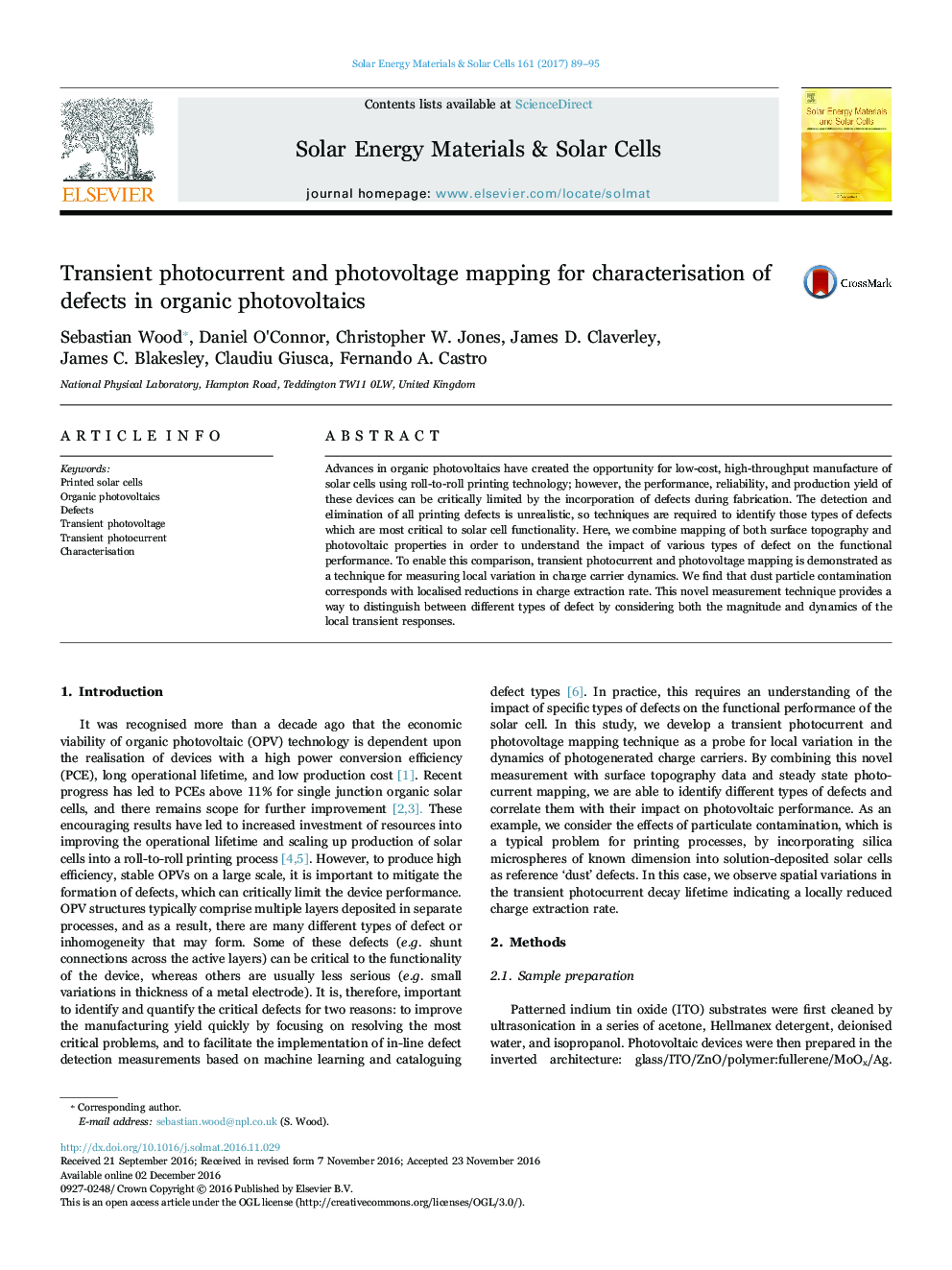| Article ID | Journal | Published Year | Pages | File Type |
|---|---|---|---|---|
| 6456995 | Solar Energy Materials and Solar Cells | 2017 | 7 Pages |
â¢Defect management in printed photovoltaics is critical for functional performance.â¢Silica microspheres provide a reference sample for dust defects.â¢Combined optical and functional mapping are used to identify defects.â¢Transient photoresponse mapping is demonstrated for defect categorisation.
Advances in organic photovoltaics have created the opportunity for low-cost, high-throughput manufacture of solar cells using roll-to-roll printing technology; however, the performance, reliability, and production yield of these devices can be critically limited by the incorporation of defects during fabrication. The detection and elimination of all printing defects is unrealistic, so techniques are required to identify those types of defects which are most critical to solar cell functionality. Here, we combine mapping of both surface topography and photovoltaic properties in order to understand the impact of various types of defect on the functional performance. To enable this comparison, transient photocurrent and photovoltage mapping is demonstrated as a technique for measuring local variation in charge carrier dynamics. We find that dust particle contamination corresponds with localised reductions in charge extraction rate. This novel measurement technique provides a way to distinguish between different types of defect by considering both the magnitude and dynamics of the local transient responses.
